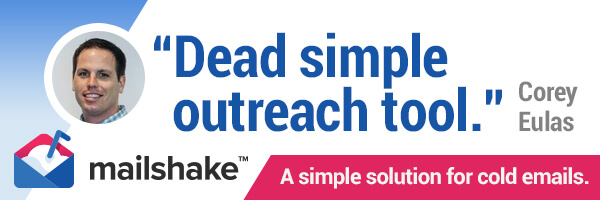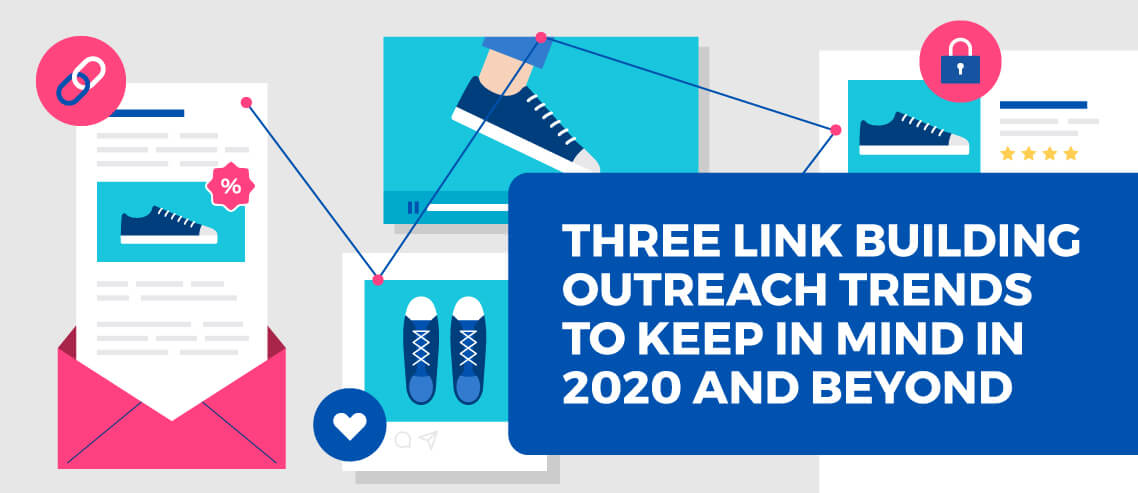10 Underrated Strategies for Finding Influencers In Your Niche

Contents
There are lots of reasons you might want to find and connect with influencers in your niche. Doing so can be invaluable in building a personal brand and becoming an “influencer” yourself, for starters.
It can also help create a network of people who will share your content for you, and if you play your cards right, could result in the chance to collaborate with influencers on content they or you are producing.
It’s also a great way to get to know new people and connect with like-minded individuals.
Unfortunately, my experience has shown me that marketers tend to be pretty unimaginative when it comes to finding influencers.
Why is that a problem?
Because it means we all wind up trying to build relationships with the same people.
That’s why it pays to think outside the box when looking for influencers in your niche. Here are 10 underrated strategies you can try to get started.
1. Browse Speaker Lists for Industry Conferences
Search Google for “your industry + conference” and take a look at the speaker lists for each conference’s website (bear in mind that it doesn’t matter whether the conference is coming up or is done and gone – you’re interested in the people, not whether or not they’ve already spoken or have yet to speak).
For example, I might search for growth hacking + conference.
![]()
At the time of this writing, the top result is the Growth Hackers Conference. I’d then click onto the speakers list, which is located here.

Chances are there will always be a few names that you recognize (or know very well). Chances are there will also be a few names that are new to you that you can add to your list of people you might want to engage with in the future.
2. Browse Other People’s Twitter Lists
Twitter lists are used to help organize the people we follow into more manageable categories. It’s also possible to subscribe to other people’s lists.
For example, I’m subscribed to 56 lists, but only two of them are lists I’ve created myself.

Browsing lists created by Twitter users you trust is a great way to discover “new” influencers in your niche.
Just head over to the profile of someone in your industry that you know and trust. Any lists they follow or have created will be accessible in the space highlighted above.
I’d generally advise looking through smaller lists – simply because the creator’s probably been more selective when building them, and they’re more likely to contain genuine influencers.
You can then follow anyone of interest, add them to your own Twitter list, or simply subscribe to the list itself.
3. Search LinkedIn
LinkedIn is invaluable to most professionals – whether you’re job-hunting, recruiting, looking to stay in touch with former colleagues, or connecting with people who are as passionate about your industry as you are.
It’s also a great tool for finding influencers in your niche.
Start by typing your niche of interest into the search bar. Bear in mind that you’ll probably want to use exact match quote marks.

Without these, your results will include people whose profiles feature variations of your search term (i.e. they won’t necessarily be that relevant to what you’re looking for).
The default setting for the search results will be “All.” This means it will include things like jobs and companies, as well as people. You’ll probably want to filter the results to show people only.

Users who are linked to your current connections will be prioritized in the results. This can be a positive since it gives you a “way in” if you want to connect with these people. On the other hand, it also means you might not necessarily be seeing the most “influential” people on LinkedIn in that niche.
What you could do is filter the results. Unfortunately, the most useful filters, for this task at least, are only available to premium users.
4. Use Authority Spy
Authority Spy isn’t a “strategy” as such – it’s a tool. I felt it was worth including here, however, because unlike a lot of tools that promise similar things, Authority Spy can be purchased for a one-time, very affordable fee. Specifically, $27 for a basic account or $47 for a pro account. A few extra features are accessible as part of the platinum account, but that will cost $17 a month on top of the $47 purchase price.
With a few clicks, Authority Spy will search Twitter, Facebook, Alltop, Google Plus, Technorati and more, for influencers related to your chosen search term. As it does this, it pulls in data about each influencer, including their social media profiles and metrics that will help you assess how authoritative each influencer actually is.
5. Check Out the Authors of Top Content On Buzzsumo
If you need to find out what content is performing best in your industry or whether a topic you’re considering covering has legs, Buzzsumo is invaluable.
Buzzsumo also offers three tools that are designed specifically to help you find influencers in your niche.
Unfortunately, only one of those tools (Twitter Influencers) is accessible to non-paying users, and even that only offers very limited results unless you want to pony up for a paid account.

However, there’s another way Buzzsumo can be used to find industry influencers, and you don’t need a paid account to leverage it.
All you need to do is use Buzzsumo in the same way you would use it to find top content. Choose the “Content Research” tab and search for your niche.

Then, simply take a look at who’s writing that top content – chances are you’ll find a fair number of interesting influencers who may well have remained hidden if you’d relied solely on using Buzzsumo’s influencer-finding tool.
6. Search for Published Authors in Your Industry
I’m going to keep this one brief because it’s so, so simple.
Just go to Amazon, enter your niche in the search bar, and choose “Books” from the menu to the left.

Then, browse the results for names of authors you don’t recognize. These could well be influencers worth engaging with.
Want another quick tip?
Beware of the “Authors” list on the left of the page. While it seems like a really quick way to spot new names, it doesn’t seem to incorporate all the authors from your search results.
7. Take Part in Twitter Chats
Twitter chats, in case you’re not familiar with them, involve a group of people meeting on Twitter to “chat” at a predetermined time, using a unique hashtag to group all messages together. The results look something like this:

They are a great way to find influencers, and better yet, meet them and start making connections.
Of course, to take part in a Twitter chat, you have to know when and where it’s happening (i.e. the hashtag participants will be using).
To find Twitter chats relevant to your niche, you can start by searching Google for “your industry + Twitter chat.” Failing that, take a look at sites like Tweet Reports and Twubs. They list upcoming Twitter chats alongside all the details you’ll need to take part.
Alternatively, you could always try hosting your own Twitter chat, and invite influencers you want to get to know (and ask them to invite other influencers, too). You can read a detailed guide to hosting a successful Twitter chat here.
8. Check Out Top Industry Blog Lists
You can probably guess how this one works – you search Google for “top [your industry] blogs.”
You then go through some of the resulting lists and check out the blogs (and more importantly, the authors) that you don’t recognize.
If you want to diversify the results you’re getting, you can try dating your search by adding a year (i.e. “top [your industry] blogs of 2016”). Alternatively, you can perform a Google advanced search to narrow the results you’re shown to a specific time frame.
You could also try changing your region, or, as odd as it might sound… using a different search engine (I recommend giving Duck Duck Go a try).
9. Ask Other Influencers for Recommendations
This isn’t something you can really try right off the bat, which is why I’ve placed it so far down the list.
Once you’ve built the foundations of a relationship with one (or more) influencers, ask them to introduce you to others.
I love this strategy for two reasons:
- It has the potential to introduce me to interesting, influential people I might never have come across otherwise.
- The fact that you have a shared connection makes it much easier to begin building those all-important ties with someone new.
10. Look at Who Your Industry’s Biggest Influencers are Following
Pretty much every industry will have those “big names” that feel inaccessible to the little guys.
Sure, if they’re good people, they’re unlikely to ignore you if you ask them a question – but will they have the time, the inclination, or the need to build a genuine, mutually-beneficial relationship with you?
Sadly, probably not.
But that doesn’t mean they can’t benefit you in other ways.
One of these ways is to look at who they are following. Chances are, a lot of the people they follow will be pretty influential too – they just might be a little more “accessible” than the influencer originally in question.
One small downside to this strategy is that a lot of big influencers will follow a fair number of people themselves (especially on Twitter).
Not all of them will, though, so watch out for influencers who are a bit pickier about who they follow. Don’t forget to check out who these influencers follow on other channels, too. Do they use Google Plus? Medium? Instagram?
In general, you’ll find that people (all people; not just those who could be considered influencers) follow fewer people on pretty much every channel than they do on Twitter (assuming they use Twitter regularly, that is).






